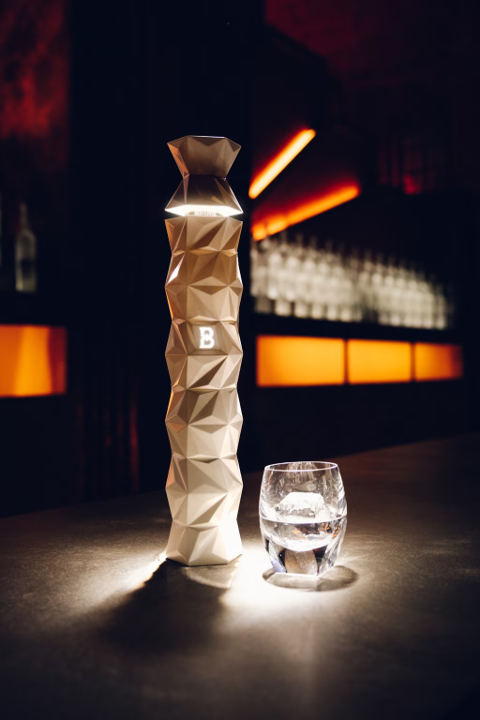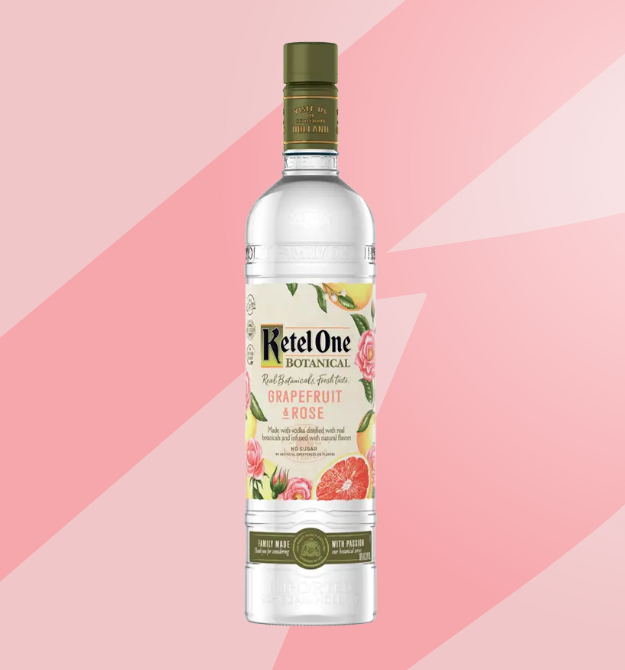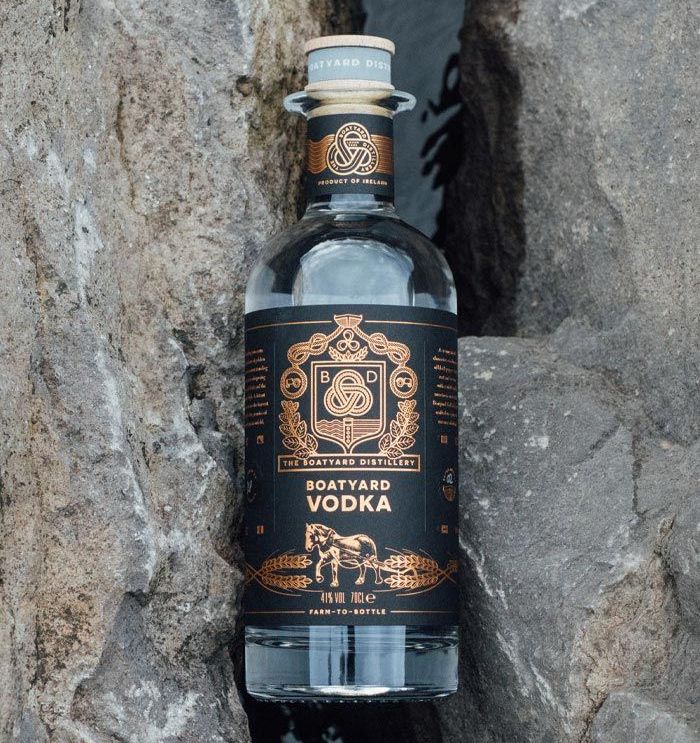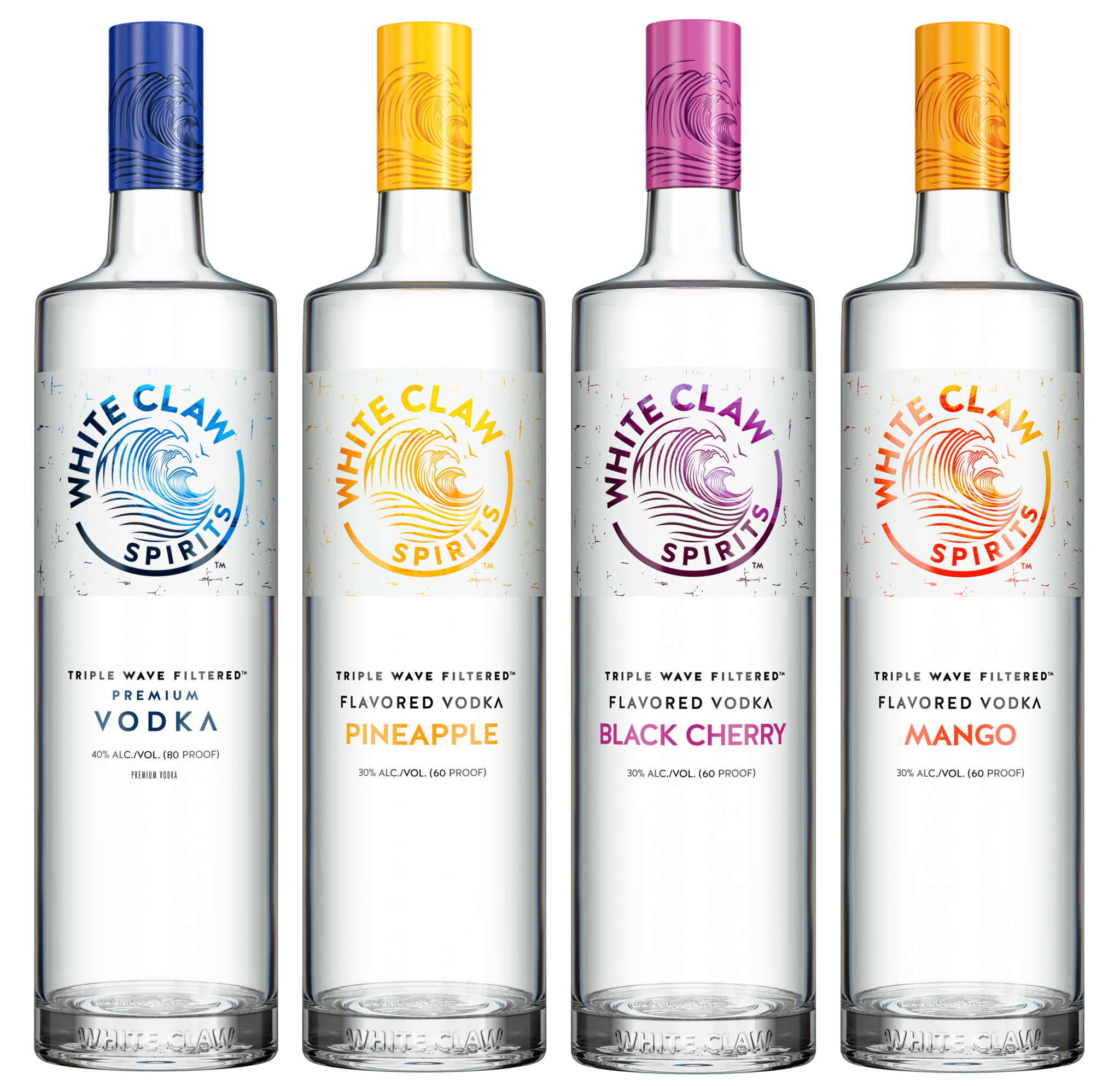22/06/2023
Vodka innovation trends
IWSR explores the evolution of the vodka category
In spite of its dominance in some markets, vodka has been outshone by other spirits categories in recent years. This is starting to change, however, as new product launches tap into contemporary trends, such as sustainability, provenance, convenience and wellbeing. There is also a growing crossover between vodka and other drinks categories, as vodka brands draw on other spirits for inspiration, and as other drinks brands enter the vodka category.
Move to premium
As with the spirits category in general, vodka is tending towards more premium launches generally. IWSR data shows that growth of the total global vodka category as a whole has been largely flat, and is expected to remain so over the next five years. However, the global premium-and-above segment has seen more positive growth, expanding in volume consumption by +6% in 2022, with expected growth of +3% volume CAGR 2022–27.
Belvedere 10, for example, highlights the provenance of its raw ingredients while offering a luxury take on the category. The rye used to produce the vodka comes from a single harvest from just one rye field in north-east Poland. The expression’s sculpted bottle features 10 levels, referencing the 10-step process used to create the vodka.
This move towards premium is also noticeable across flavoured vodka, such as Cîroc’s new limited-edition honey melon flavour. Aimed at the summer months, Cîroc Honey Melon is being supported by a new campaign entitled ‘No Reservations Needed’, challenging ideas of class and exclusivity.
Vodka RTDs and RTSs, too, are becoming more premium, such as the new Grey Goose Classic Martini Cocktail, which combines the vodka with dry French vermouth and orange bitters. To serve, the liquid can be either shaken or stirred, and garnished with an olive or a lemon twist. The drink is thought to be the first bottled martini cocktail produced by a major vodka brand.
Flavour innovation
Flavoured expressions within the vodka category span a full spectrum from subtle to overt. More recently, new expressions have tended towards the more considered, with producers not only highlighting the flavours present in the raw materials used, but using additional ingredients in a measured way. In some cases, these take a leaf from gin’s book, distilling botanicals to extract flavours rather than macerating or adding flavourings.
These spirits bridge the gap between the gin and vodka categories, appealing to consumers who are already familiar with botanical spirits, as well as those who are not interested in sweet or artificially flavoured vodkas. As these are distilled and therefore not generally sweet, they tend to be lower in calories, resonating with the health and wellness trend.
The Glasgow Distillery Company, for example, produces a pair of Botanical Vodkas – Fresh Citrus and Rich Coffee – both clear, and distilled with a combination of ingredients. The Citrus variant is made with a selection of citrus, as well as rosehip and fresh ginger. The Coffee flavour is not only distilled with coffee beans, but also cacao nibs, tonka beans and orange.
Ketel One’s Botanical range consists of variants such as Grapefruit & Rose and Cucumber & Mint, with packaging that highlights the absence of carbs and artificial flavours – positioning emphasised by the brand suggesting a low-calorie serve with soda. The brand also produces a range of RTD spritzes made using its Botanical range.
Also expanding its range of flavours is Absolut, with its launch of a trio of new additions that nod to contemporary drinks trends. The new Absolut Wild Berri contains no added sugar, while Absolut Tropical Fruit has a mid-level ABV of just 20%.
Category-blurring flavours
Among the latest flavours from Absolut is one intended to blur the lines between spirits categories, namely vodka and tequila. The new Absolut Smoky Piña combines flavours of chili and smoky pineapple. To strengthen the association with tequila, the brand recommends serving the expression as a shot garnished with a pineapple wedge and chili salt. This launch taps into the trending agave spirits category, as well as the rising popularity of Mexican flavours in general.
Stoli has also launched a new Chamoy flavour, inspired by the Mexican condiment of the same name, which combines pickled fruit with chili flavours.
Provenance and focus on ingredients
A growing trend in spirits for some time now, and in drinks in general, is a focus on provenance, as well as sustainability. Vodka brands have historically been more concerned with premium cues, purity credentials and overt flavours, but this has been changing in recent years, with a growing number highlighting their place of origin, as well as creating spirits from specific origins.
Ireland’s Boatyard Distillery, for example, offers vodka made with wheat that’s traceable to the specific farmer and field. Highlighting Scottish barley is vodka brand X Muse, combining two heritage varieties for their distinct flavour profiles. The Reid Single Malt Vodka from Cardrona Distillery in New Zealand takes a similar approach, highlighting the flavours of malted barley.
In the US, vodka brand Tito’s Handmade Vodka highlights its origins (‘Made in Austin, Texas’), its use of corn as a key ingredient, as well as its pot still distillation process. By positioning itself as both craft and handmade, it delivers heritage cues as well as transparency around its ingredients and distillation.
Turning the idea of provenance on its head, meanwhile, is Wisher Vodka, which has its origins online, in the Metaverse. When the brand first appeared, it minted cocktail NFTs and built a following online before its real-world release. The brand also highlights its grain-free base of sugar beet.
RTD and RTS development
The ready-to-drink and ready-to-serve categories have grown in recent years, thanks to a number of factors, including growing demand for convenience and greater acceptance of these formats. Vodka is well placed to capitalise on these trends, as the hard seltzer boom of a few years ago is replaced by spirit-based RTDs, and as demand for pre-mixed classic cocktails grows. RTD cocktails / long drinks, for example, saw global volumes increase by +10%, 2021-2022, and are expected to grow at a volume CAGR of +6%, 2022-2027. In the US, vodka-based RTDs command the largest share and growth rate within the spirit-based RTD market.
Highlighting the classic cocktail trend is Ketel One’s recent Born to Cocktail Campaign, a cinematic ad directed by film-maker Daniel Wolfe, featuring sophisticated cocktail culture and reminding viewers of vodka’s place in it. Other launches include those from Grey Goose, with the Classic Martini Cocktail, as well as Absolut, with two new flavours added to the Absolute Cocktails range: Espresso Martini and Strawberry Spritz.
RTDs moving into spirits
While established spirits brands tend to extend into the RTD category, a few RTD brands have done the opposite, venturing from RTDs to full-strength spirits – vodka in particular.
Among these is hard seltzer pioneer White Claw. The brand recently expanded into spirits with its new White Claw Premium Vodka made with American grain, accompanied by a range of flavoured vodkas. It also launched a range of White Claw Vodka + Soda cans.
Another hard seltzer to make the move into full-strength spirits is Truly, with the recent introduction of its Flavored Vodka range, inspired by, and capitalising on, its hard seltzer flavours. The brand recommends using these brightly-coloured spirits in a Spritz-style serve, adding soda and Truly Hard Seltzer.
Sustainable and socially responsible
In keeping with other spirits brands, sustainability and social responsibility is a priority for contemporary vodka brands. Meili Vodka from actor Jason Momoa, for example, is made with grain sourced locally from the brand’s owned farms, located near to the brand’s water source and distillery, in order to reduce its carbon footprint, and packaged in what is said to be the first 100% recycled glass bottle on the market.
Among those vodka brands tackling food waste, meanwhile, is Ugly Vodka, with part of its base spirit produced from apples that would otherwise have been discarded. Produced in Australia, the brand’s first batch is said to have saved 20 tonnes of apples from going to waste.
Note: all images included in this article are taken from the brand’s website.
You may also be interested in reading:
Sustainability concerns drive interest in organic, natural and alternative wines
The evolution of the Martini
The 8 drivers of change for beverage alcohol in 2023 and beyond
The above analysis reflects IWSR data from the 2023 data release. For more in-depth data and current analysis, please get in touch.
CATEGORY: All, Spirits | MARKET: All | TREND: All, Innovation |





